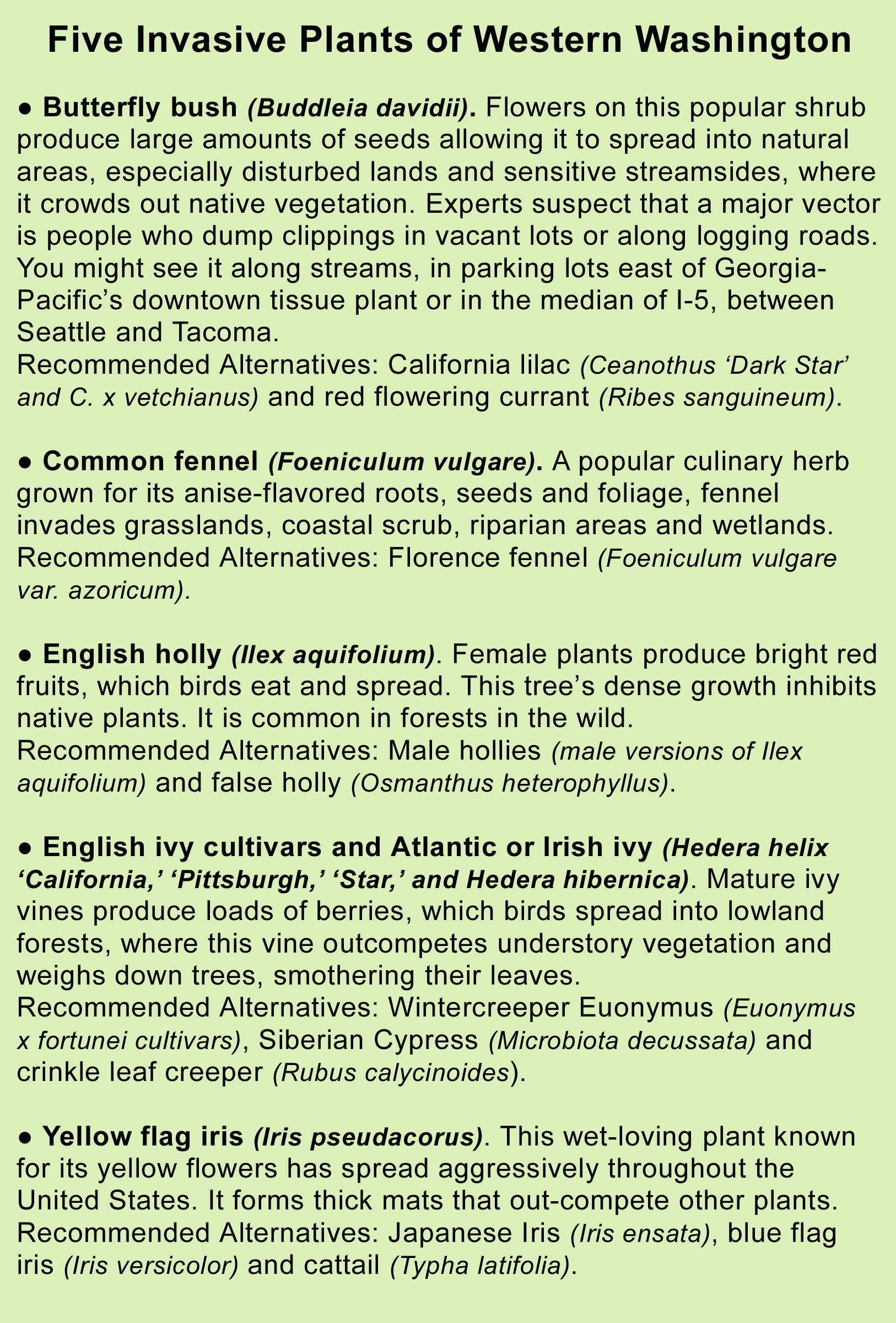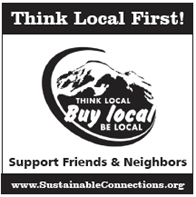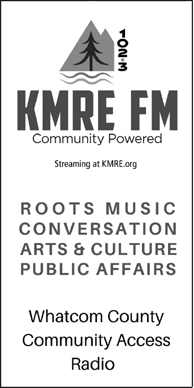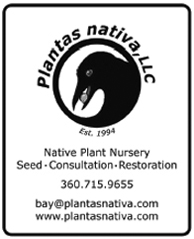Twenty Years Ago
Since January 2014, Whatcom Watch has been reprinting articles from issues printed 20 years ago. The below articles appeared in the September 2005 issue of Whatcom Watch.
by Seth Cool
Last February, a couple friends and I paddled down into the estuary of the Nooksack River. It’s a wonderful place, where the river winds randomly through alder and cottonwood forest. Logjams and the abundance of bald eagles are a reminder that this stretch of river is fairly pristine.
As I rounded the corner, something among the salmonberry bushes caught my eye. It was a huge unkempt bush, with spent flowerheads hanging over the river and a few leaves showing some uncharacteristic gray-green coloration in the winter forest. It was a butterfly bush. I’ve seen butterfly bushes along I-5 and in abandoned lots, but I like to believe invasive plants don’t invade pristine areas where floodwaters rule and eagles fish.
Invasives crowd out native plants to create monocultures with little habitat for native flora and fauna. For example, iris grows thick mats and butterfly bush, holly and fennel create thickets. English ivy cultivars are famous for their ability to replace the beautiful plant communities of natural forests with an “ivy desert.” Ivy vines restrict nutrient flow in tree trunks and in the canopy, block sunlight and make trees more susceptible to breakage, wind stress and disease.
To be clear, the vast majority of nonnative garden plants do not spread aggressively into the wild and are safe to plant in your garden. Invasive plants are those that spread and reproduce by themselves in natural areas. Commonly known invasive plants that are no longer widely sold at nurseries include Scotch broom, Himalayan blackberry and Japanese knotweed. A few invasive plants are still sold at nurseries, including butterfly bush, holly and a handful of other popular garden plants. These plants are invading disturbed and wild areas, where they outcompete native vegetation and can cause all sorts of problems.
The Washington State Nursery and Landscape Association (WSNLA) understands the problem and has convened a task force to work on phasing out the sale of invasive plants. Conservation Northwest is a participant through the Washington Invasive Species Coalition, a group that’s working to close two major pathways of introduction: marine (through ballast water from large ships) and terrestrial (through nursery plant introductions). Other members of the WSNLA Task Force include: The Nature Conservancy, the University of Washington Botanical Gardens and many retail and wholesale nurseries.
Five Garden Plants Identified as Invasive

The WSNLA Task Force has approved a scientific assessment process for plants, and under a pilot project has identified five plants as invasive (see above). Now, several nurseries are working on a volunteer basis to explore how to phaseout the sale of these plants and successfully offer consumers safe, alternative plants.
The Washington Invasive Species Coalition is also working with the Governor’s office to create a statewide Washington Invasive Species Council. The mission will be to develop an invasive species management plan and increase coordination and efficiency of government work to prevent and control invasive species. When shopping for new garden plants at your local nursery, please ask if the plant you are purchasing is invasive.
If you already have invasive plants in your yard it is important to keep the seeds and roots from spreading into the wild— consider deadheading the seeds or removing the plants entirely. Be sure to put any clippings and roots into plastic bags and place in the garbage. The Whatcom County Noxious Weed Control Board has specific information about how to remove weeds from your property: 360-354-3990.
You can find more information about invasive plants and safe alternatives at: http://www.invasivespeciescoaltion.org.
__________________________________
When this article was written, Seth Cool was program manager for the Washington Invasive Species Coalition.





























